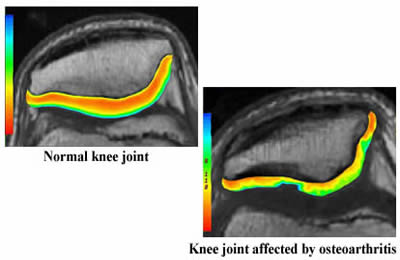How Does Osteoarthritis Manifest Itself?
Osteoarthritis (OA) occurs when the cartilage (a tough, but flexible spongy tissue at the ends of bones in the affected joint) doesn’t work as well as it should, this causes the ends of bones glide against each other with more friction. This joint disease manifests itself by generating some symptoms. And there are some procedures and tests that can help diagnose it.
It’s important to get to know the underlying condition of the symptoms that you are experiencing. Unfortunately, some symptoms of OA can be generated by other health conditions. That’s why you may need to take several tests before eventually your doctor make a diagnosis.
The symptom of OA can manifest itself suddenly such as after accident or injury from sport activity. And sometime it gets worse in the morning.
But typically it develops gradually and worsens over time. Therefore, age is the most significant risk factor. Yap, as you age, your risk of having this disease increases.
In diagnosing OA, physical examination is usually the first step. In this procedure, your doctor will closely evaluate and examine the affected joint physically through symptoms that appear.
The following are some major concern that will be closely evaluated in physical examination:
- The level of joint’s range motion! Are you still able to move your joint? Or you can move it but with some movement limitations.
- The level of pain that you feel.
- Muscles are essential to help move your joint. For this reason, your doctor may also need to assess the strength level of muscles in your affected joint.
- If the affected joint is knee or hip, the way of how you walk can be analyzed.
- Checking other symptoms such as joint stiffness, redness, tenderness, and swelling.
Since the damaged cartilage in OA usually has some characteristic appearances, certain imaging tests such s x-ray can help diagnose it.
The cartilage damage doesn’t show in this test, but the loss of cartilage can be seen because it reveals by a narrowing of the distance between bones in the affected joint. Even many sufferers have evidence of the damaged cartilage in x-ray test before eventually they feel the symptoms of the disease.
What else x-ray test can do to help diagnose OA:
- Fluid –filled cavities (cysts) can form in the bone. This occurs as the mechanism of the body in responding the poor cartilage performance and to restore the balance of the joint. These cysts can be analyzed in x-ray test.
- Another mechanism of the body to respond the problem is by increasing bone density in the affected joint. When the cartilage in the joint is damaged, the ends of bones in the joint are not properly cushioned. This triggers the body to lay down more bone cells, causing increased bone density and this can lead to uneven joint surfaces that usually can be seen in x-ray test.
Some experts are continuously trying to find the most effective method in diagnosing this joint disease as early as possible. Early diagnosis can be so helpful to provide a better prognosis of the disease.
Sometime the use of x-ray imaging test may be not enough. Other imaging tests with more sensitive result can be used. These may include MRI, CT, or other imaging tests.
MRI
It stands for magnetic resonance imaging. It is more sensitive than x-ray. It can provide detailed picture of small cartilage loss as well as soft tissue swelling in the joint.
Even some experts claim that with certain methods of MRI, they can diagnose early cartilage degeneration. With early diagnosis, some treatment approaches can be initiated to delay progression or may help prevent osteoarthritis.
Computed Tomography (CT) test
It can help demonstrate the degree of bone spur (osteophyte) formation and the correlation to the contiguous soft tissues. It is also excellent choice to help provide guidance for diagnostic or therapeutic procedures.
Other choices
If you experience some symptoms of osteoarthritis but the characteristic appearance of this disease doesn’t appear on x-ray, MRI, and CT test – more sensitive imaging tests may be required. These can be with ultrasound imaging test and ‘Radionuclide nuclear medicine bone scans’.
The use of imaging test is usually not enough to diagnose OA. Some laboratory tests can be involved. These may include:




